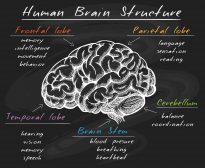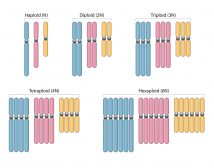Definition
noun
A glycolytic pathway whereby glucose is metabolized and converted ultimately to pyruvate, and results in a gain of ATP and NADH molecules
Supplement
Cellular respiration is a cellular process comprised of glycolysis, Krebs cycle, and oxidative phosphorylation. Glycolysis is the stage in cellular respiration involved in the degradation of a simple sugar to pyruvate in order to yield high-energy molecules (e.g. ATP and NADH).
The Embden-Meyerhof-Parnas pathway is the most common and well-known type of sugar degradation. It makes use of glucose, which is converted to a series of intermediated and ultimately to pyruvate. It is comprised of two phases: (1) the energy-investment phase and (2) the energy-payoff phase.
The energy-investment phase is the first phase of glycolysis in which energy (i.e. two ATP molecules) is consumed so that glucose may be processed and converted into two 3-carbon sugar phosphates: glyceraldehyde-3-phosphate (G3P) and dihydroxyacetone phosphate. The G3P proceeds to the next phase, i.e. the energy-payoff phase whereas its isomer, dihydroxyacetone phosphate, has to be converted to G3P (via isomerase) to progress into the next phase.
The energy-payoff phase is the second phase of glycolysis where energy-rich molecules (ATP and NADH) are produced. Each G3P molecule yields one NADH and four ATP molecules during this phase. With the conversion of dihydroxyacetone phosphate to G3P, the products and the reactants of the processes involved in this phase would be doubled. Therefore, in the energy-payoff phase, two NADH and four ATP molecules can be expected.
The Embden-Meyerhof-Parnas pathway yields two NADH and four ATP molecules per glucose. Since the energy from ATPs is used during the energy-investment phase, the net gain from this pathway will be two NADH and two ATP molecules per glucose. The final products are pyruvate and water molecules. In this pathway, two pyruvate molecules and two water molecules can be expected for every glucose molecule. The pyruvate is converted to acetyl CoA to enter the next stage of cellular respiration, i.e. Krebs cycle.
The name of this glycolytic pathway is derived from the names of Gustav Embden, Otto Meyerhof, and Jakub Karol Parnas, who described the processes involved.
Abbreviation/Acronym:
- EMP pathway
See also:







